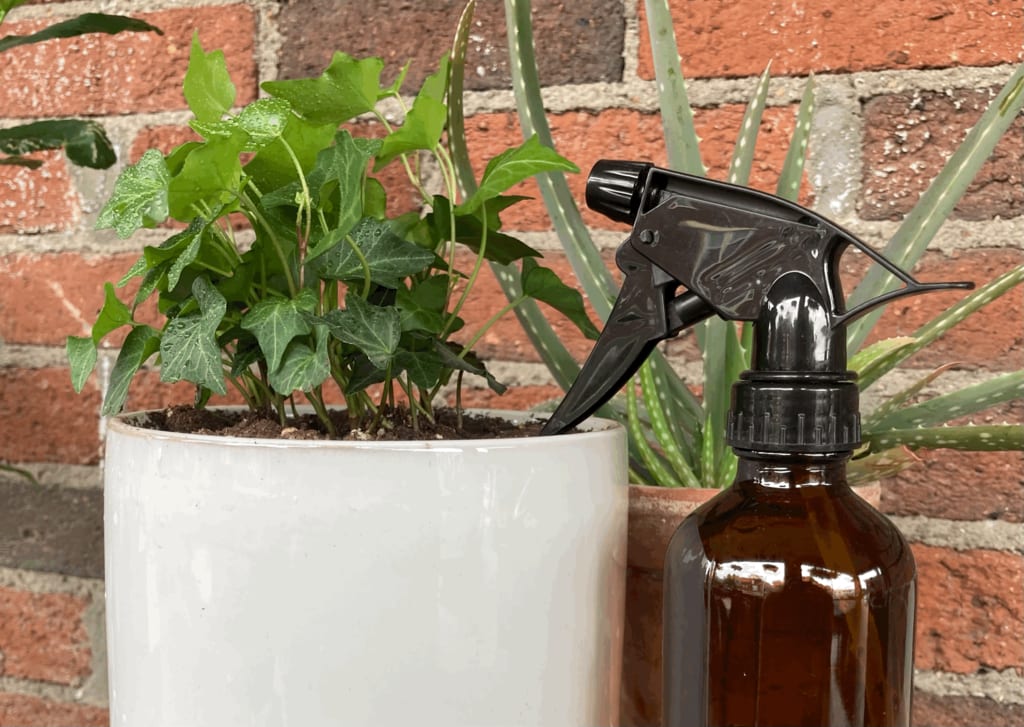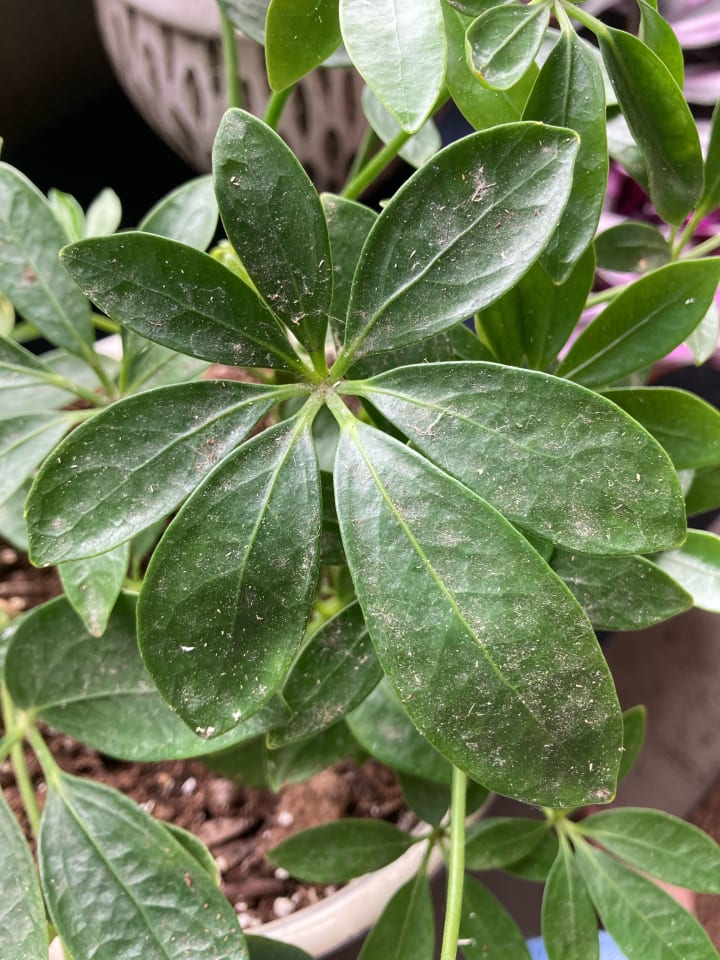
Leaf shine does wonders for plants. You could buy some at the store pre-mixed, but the ingredients and their purpose are confusing - or you could easily create your own leaf shine to better suit the individual needs of different plants. Included are also some DIY leaf shine recipes that act as a pest and disease preventative.
Hard water, well water, dust, pests and inoculum can all accumulate on leaves. This may leave them lackluster (see the photo of my sad schefflera plant). Or worse still, can lead to mechnical damage from pests, stunted growth, disease, or death.

Different species of plants will respond differently to different leaf shines. I consider it best practice to test the shine on an inconspicuous leaf, and watch how the leaf does for a week before treating the whole plant. All of the Schefflera's I have ever owned tend to attract an inordinate amount of dust, pests (such as aphids and scale), and diseases (such as powdery mildew). I often wonder how they ever survived on their own. Many other plants I have encountered do not need nearly as much leaf maintenance as these. I scout, and leaf shine the Schefflera about once a month. Every other plant I have encountered could use leaf shine a lot less frequently: maybe once a quarter or every half year.

So, here are a few easy recipes depending on what you want to treat for:
BASIC SHINE #1
- 2 cups water
- 4 tsp. castile soap (such as unscented Dr. Bronners) or Dawn dish soap
- 2 tsp. plant based oil that is liquid at room temperature (such as sunflower or olive)
Mix all ingredients into a spray bottle, shake well, and spray a small amount onto a microfiber cloth. Gently clean an inconspicous leaf on your chosen houseplant. Wipe all solution off, and watch for a week to see how the plant reacts before treating a whole plant. This solution can sit for awhile without losing much efficacy. Dawn dish soap is also used at times to suffocate many insect pests - although I don't know if this leaf shine has a high enough concentration to be used as a pest treatment.
DISEASE AND PEST TREATMENT (or PREVENTATIVE) #2
This one I tend to consider to be the safest solution; as its used in many organic agricultural settings. We use a more intense version at the organic hemp farm I work at.
- 2 cups water
- 2-12 tbsp. of hydrogen peroxide (I would recommend 2-6 tbsp. as a preventative, and 8-12 tbsp. as a treatment)
Mix all ingredients into a spray bottle and shake well. Spray solution onto a microfiber cloth and gently rub onto a leaf to clean. Remove all solution to finish. I would use the entirety of the spray bottle on the same day that it is mixed for the greatest efficacy.
HARD WATER BUSTER #3
- 2 cups water
- 3 tsp. vinegar
- 2 tsp. plant based oil that is liquid at room temperature (such as sunflower or olive)
Mix all ingredients into a spray bottle and shake well. Spray solution onto a microfiber cloth and gently rub onto an inconspicuous leaf to clean. Remove all solution to finish. Watch for a week to see how the plant reacts before treating the whole plant.
Do not ever mix vinegar and hydrogen peroxide! This can create parecetic acid which is corrosive to human tissues. For each recipe, you can modify as needed, but please only use JUST vinegar or JUST hydrogen peroxide for this reason. Additionally, I would keep any vinegar minimal as it can be harmful to plant tissues at higher concentrations. Hydrogen peroxide is generally safe for plants at higher concentrations than vinegar. If you are really concerned about leaf burn, you could also rinse off any solution with water and wipe dry, but I don't think that will be necessary with the aforementioned recipes.
About the Creator
Courtney Nugen
Hi! I am Courtney Nugen. I breathe plants and books, and dabble in writing. I graduated from the Ohio State University with a bachelor in science for agroecology and a minor in Spanish.






Comments
There are no comments for this story
Be the first to respond and start the conversation.